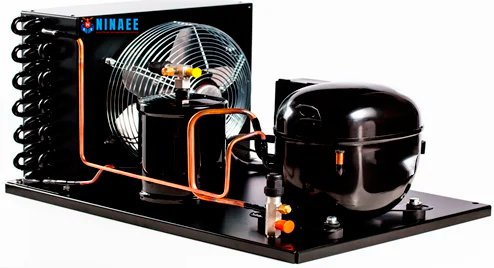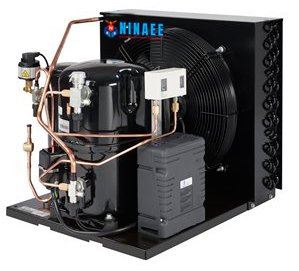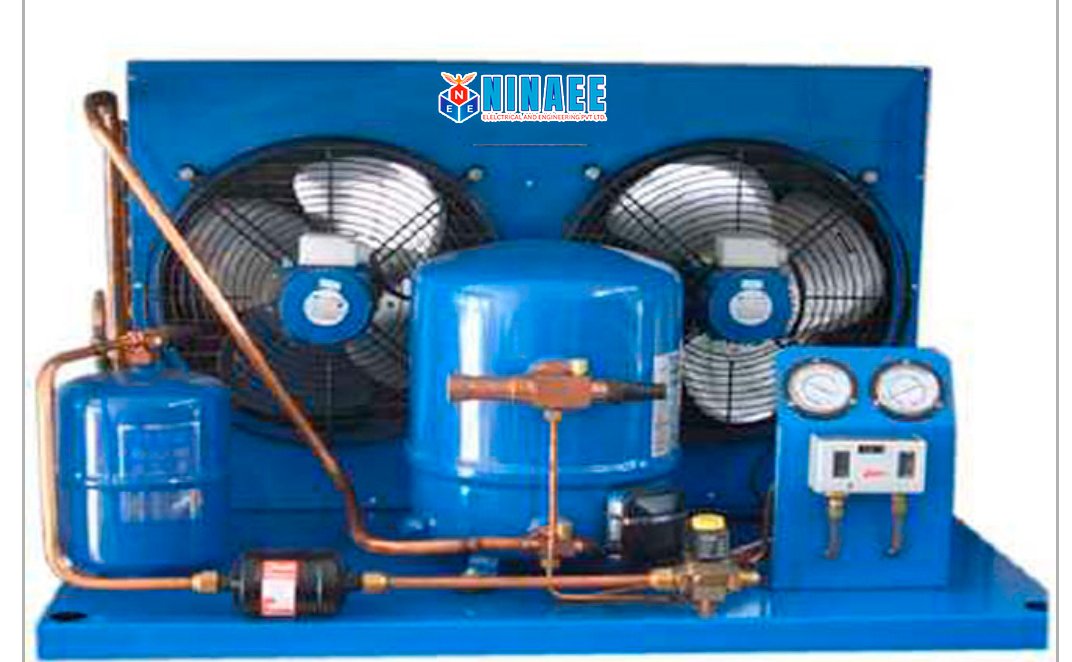


A Condensing Unit is a critical component in HVAC and refrigeration systems, responsible for heat rejection. It combines key elements like the compressor, condenser coil, and fan into a single unit to facilitate the cooling process. These units are typically located outdoors or in dedicated mechanical spaces.
Components of a Condensing Unit
-
Compressor:
-
The “heart” of the refrigeration cycle.
-
Compresses low-pressure refrigerant gas into a high-pressure, high-temperature gas.
-
Types: Reciprocating, Rotary, Scroll, or Screw.
-
-
Condenser Coil:
-
Transfers heat from the refrigerant to the surrounding air or water.
-
Constructed of copper or aluminum tubing for efficient heat transfer.
-
May use fins or microchannel designs to increase surface area.
-
-
Condenser Fan:
-
Blows air across the condenser coil to dissipate heat.
-
Enhances the cooling process in air-cooled systems.
-
-
Receiver (Optional):
-
Stores excess refrigerant to regulate the system’s refrigerant charge.
-
Common in larger systems or systems with varying cooling demands.
-
-
Controls and Valves:
-
Include pressure switches, thermostats, and expansion valves.
-
Help regulate the operation and ensure safety.
-
Working Principle
-
Compression: The refrigerant gas is compressed, increasing its pressure and temperature.
-
Heat Rejection: The hot refrigerant gas flows into the condenser coil, where it releases heat to the environment via air or water.
-
Phase Change: The refrigerant condenses into a high-pressure liquid as it cools.
-
Expansion: The high-pressure liquid refrigerant exits the condensing unit and enters the evaporator for the next phase of the cooling cycle.
Applications
-
HVAC: Residential and commercial air conditioning systems.
-
Refrigeration: Cold storage, supermarkets, and industrial refrigeration systems.
-
Industrial Processes: Equipment cooling and maintaining controlled environments.
Advantages
-
Compact Design: Space-saving and easier installation for various settings.
-
Scalability: Available in a wide range of capacities for different applications.
-
Energy Efficiency: Advanced units include variable-speed compressors and fans.
-
Reliability: Durable components ensure long operational life.
